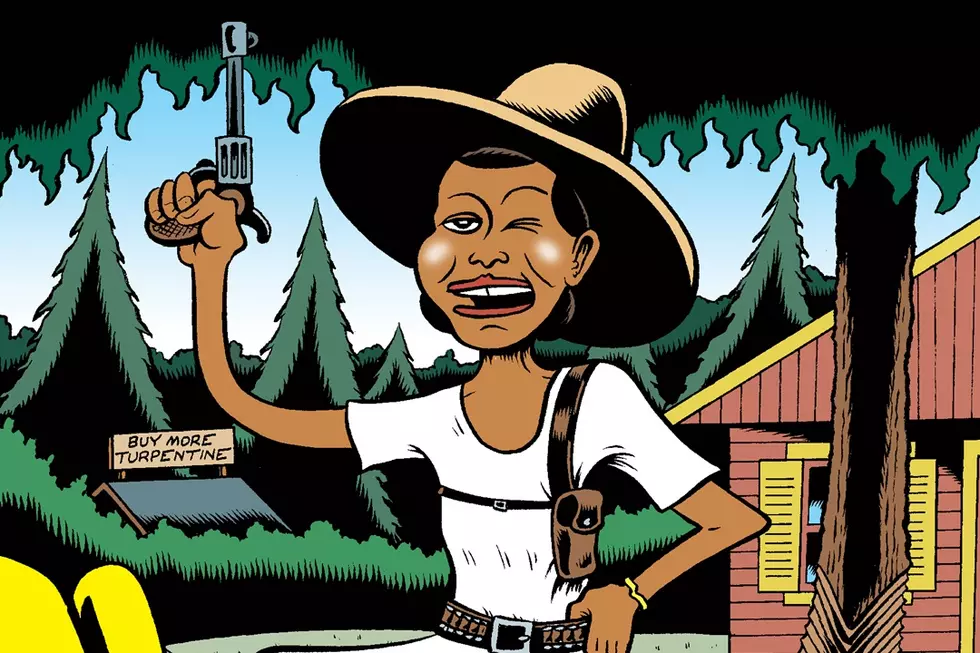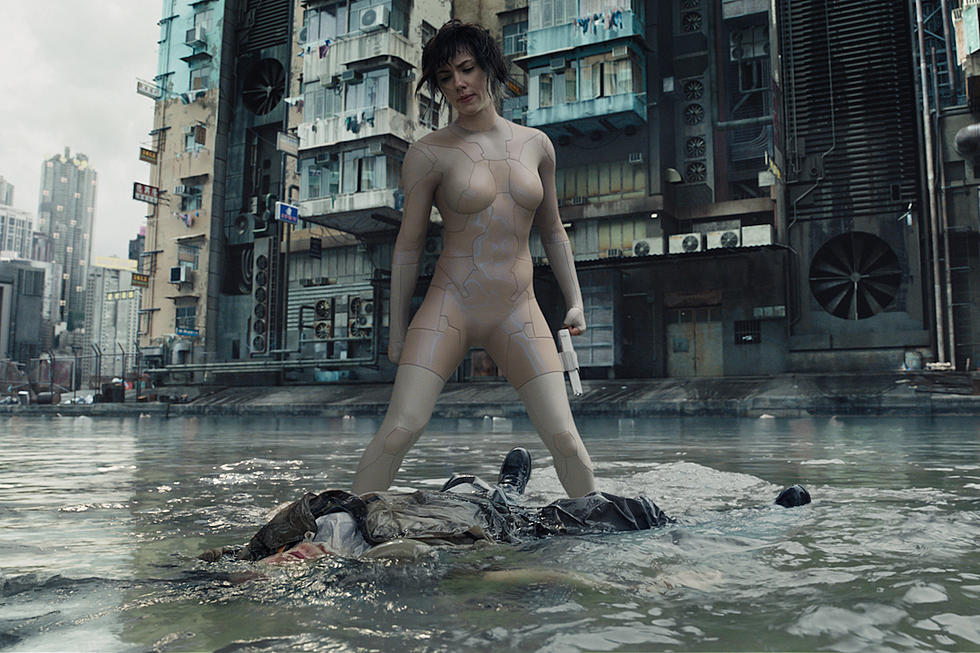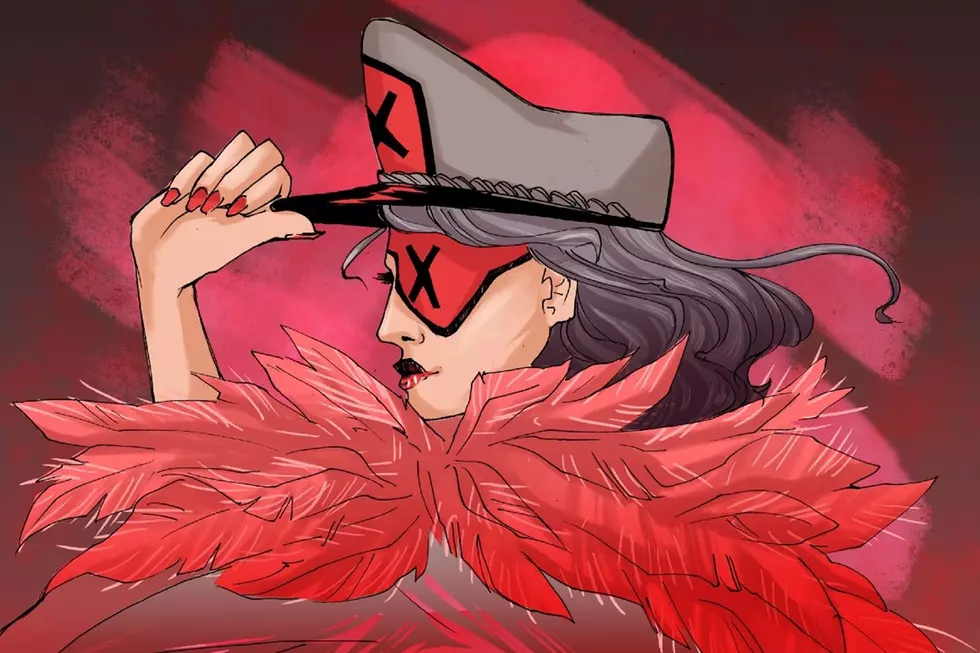![‘Snowpiercer: Terminus’ Offers First Class Return to the Second Class Struggle [Review]](http://townsquare.media/site/622/files/2015/11/Snowpiercer_Jean_Marc_Rochette1.jpg?w=980&q=75)
‘Snowpiercer: Terminus’ Offers First Class Return to the Second Class Struggle [Review]
Long before Snowpiercer was a film starring Chris Evans and Tilda Swinton, Le Transperceneige was well known in Europe as a classic of the science-fiction genre. Created by writer Jacques Lob and drawn by Jean-Marc Rochette, the first volume – The Escape – was published in 1982 at the height of the severe global economic recession and the dawn of Thatcherism and Reaganomics on the world stage.
The fact that the English translation didn’t arrive until last year, after the greatest post-war slump of all, is perhaps no coincidence – the tale of a massive train harbouring the last humans on earth, sorted by class from richest to poorest with no room for progression is as timely today as it was in the ‘80s.
And now, one year later, not only do we have the subsequent sequels available on the English market but also a brand new volume (just released in France) that will hit our shelves in February – and we've had a chance to read and review it in advance.
The original volume is a complete story in itself, and while it would be possible to read the rest of the series without it, one would certainly miss out on many of the subtleties at play. Snowpiercer is the name of the train, carving its way across an ice-filled future where a great disaster has rendered conditions uninhabitable. Driven by perpetual motion, the train is both saviour and prison – affording a life of unfathomable luxury to the front passengers and intolerable deprivation to the tail end.
Here is where the comic and the film part ways, with the latter sharing only the train and overall premise with Lob’s original vision.
Proloff is one of the accursed tail dwellers and his unexpected physical progression along the train with the assistance of middle class Adeline tips the balance of this fragile system. For the reader the tail exists only in tortured flashbacks, a desperation merely hinted at, while much can be gleaned by witnessing Proloff’s reactions to the manner the higher classes live in. The struggles that exist within each class are almost as great as the tensions that lie between, and the comic is terrifically dark, never shying away from the ugliness of human nature.
Yet this bleakness is punctuated by shocks of genuine emotion and passion – anger, joy, grief, lust – ably rendered by Rochette, which push this tale into the realm of realism. Where would we be without these key components of the human condition?
The answer, partly, can be found in the original sequels, by Rochette and Benjamin Legrand. The Explorers and The Crossing, originally published in France in 1999-2000, and combined by Titan in one volume under the first title. Here the story begins on another train, another Snowpiercer, where those in control are aware of the first train that roams the Earth. Only small mention is given to the original, but much of the stark nature of class separation is glanced over here – more subtle perhaps, but if the tensions in the first comic are a little on the nose, they give the story meaningful depth that the sequels occasionally lack.
These two sequel stories are as unrelentingly dark as hell, introducing a new fear for the passengers in the form of the threat of crashing into something on the tracks. The train carries out braking tests, sending their Explorers out into the cold – initially in the guise of safety checks but later to procure items for the bored upper classes. Puig is one such explorer who is asking difficult questions while his fellow lower class neighbours are apparently content with the distraction of virtual reality trips and gambling.
Rochette’s hand is different here, with characters easily confused in their Explorer outfits, and without the classic definition that The Escape revelled in. The tones are muddier, murkier, the transitions less seamless and more rigid. Sound effects are all but absent and balloons occasionally overcrowd the panels. Make no mistake, Rochette’s work could never be described as shoddy but when the first comic is so breathtakingly well rendered the second simply cannot compare.
The plot too is messier, less deceptively simple than its predecessor, and the characters are less substantial, less relatable. Our co-protagonist, Val, is simply a conveniently female side character rather than Adeline’s agent of change. The shorter story contained within the volume, The Crossing, has a much better pace as the train carves through the ice in a brand new direction only to once again sink into the gloom. There is an expansion upon the religious fervour that is seeded within the first volume, the middle classes have more bite with numbers in their favour, outside glimpses of the world are tantalising and overall it is a good – if somewhat unnecessary – comic.
Unnecessary that is until the new volume, Terminus. Rochette is still present as artist, the continual thread holding this series together across the decades, while Olivier Bocquet takes over script duties from previous sequel writer Legrand.
Picking up from where the previous sequels left things, Terminus kicks off at a tremendous pace when the stray signal from the other side of the frozen ocean found in The Crossing reinvigorates the survivors. The small sliver of hope that was missing is now suddenly in sight as Val points out that the signal may be abandoned, but something is powering the building in a world used to darkness. The cover of the book perhaps hints that what they find is no paradise – a strange people who wear mouse masks, a sinister Disney-esque nod to capitalist serfdom and greed gone feral.
Snowpiercer: Terminus[/caption]
The original Snowpiercer was described by some critics as Dantean, a descent into hell as Proloff climbed through the carriages towards ever increasing wealth and depravity. Terminus ties back to that theme, examining a society on the brink of extinction who favor expansion over morality, greed over humanity, and a journey that steers ever downwards.
The class struggle and fearful power of the mob are once more laid bare, with new, more modern concerns brought into play – most prominently the all too real dangers of nuclear power. In a dead world where energy is exhausted and morals hard to find, Terminus leans close to current real world concerns of corner-cutting governments who prioritize easy solutions over protecting their people.
Rochette’s lines return to their dark and powerful beginnings with a renewed passion that underlines the nightmarish visions he draws forth. The clean lines are still replaced but Rochette has embraced the grim murk of the previous sequels and turned it from soft blurs into harsh depth. There is no confusion here between characters whether at distance or up close, only the mouse-clad strangers remain inscrutable.
Terminus also has color, washed out watercolors staining the pages in sharp contrast to the earlier black and white work, cleverly separating this story from the ones that came before. The touches of colour add to the swell of hope in the beginning, before bathing the horrors to come in the full light of day.
In Snowpiercer, happy endings are in short supply. But unlike the middle volume, which promised only death and despair, Terminus reintroduces the spark of hope and unpredictability of human nature that made the first Le Transperceneige a true classic. Once more the political subtleties and social commentary ride close to the surface, providing the depth and timeless quality that is essential when following in the footsteps of Jacques Lob.
In truth my love of the first comic prejudices me against the sequels. It is rare that class tensions are addressed in comics, rarer still to avoid middle-class condescension when doing so, and the first Snowpiercer captures the exaggerated but terrible realities of our world's messed-up power structures.
That Terminus not only hails back to this original subject, but also introduces new pressing concerns for the most vulnerable in society, is both welcome and impressive.
More From ComicsAlliance





![The Boys Are Back in Town With Marvel Legends’ New Guardians of the Galaxy Figures [Review]](http://townsquare.media/site/622/files/2017/03/IMG_2839.jpg?w=980&q=75)


![The Adorable Nightmare Of The 90s Is Alive In ‘The Bloody Best Of Lenore’ [Preview]](http://townsquare.media/site/622/files/2017/03/Lenore_featured.jpg?w=980&q=75)
